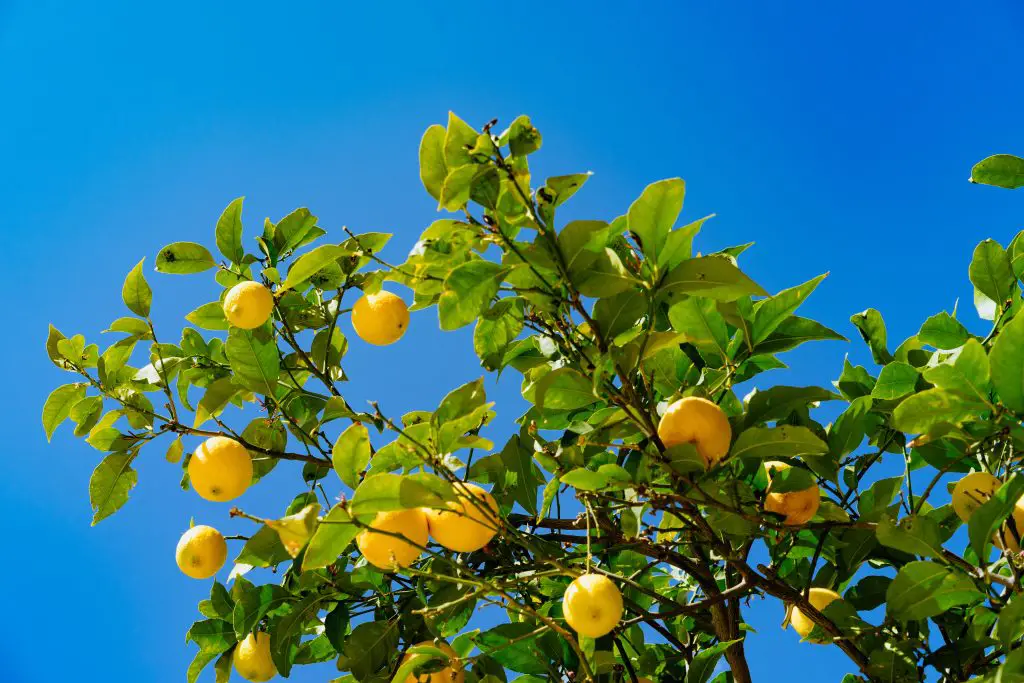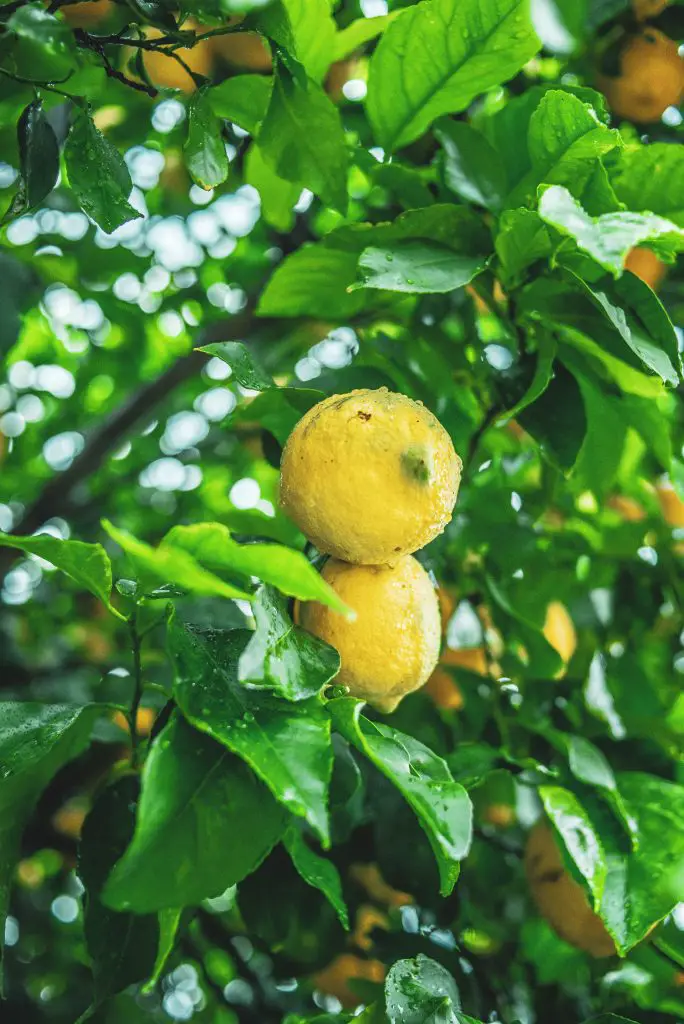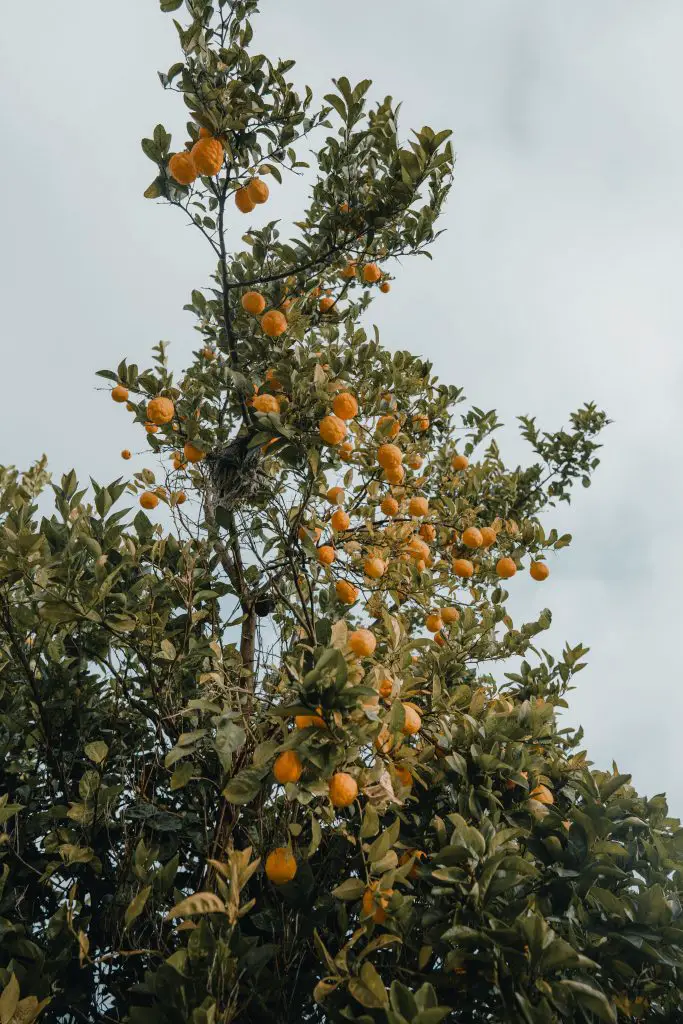Do Lemon Trees Lose Their Leaves? Lemon trees are popular plants to grow at home because they produce large amounts of fruit and are generally attractive trees, however, some people that have grown these trees do see lemon trees losing their leaves. Is this normal?
Lemon trees are evergreen trees that should retain their leaves throughout the season. A sudden loss of leaves is an indication that the tree is experiencing some sort of stress which can occur because of low temperatures or a lack of nutrients and water.
In the case of temperature, lemon trees will drop their leaves and have the fruit buds damaged if the temperatures get more than a few degrees below freezing and if there are sustained periods of cold it can kill the tree over time.
The other reason why you may see a loss of leaves is a lack of nutrients. This can be created by low nutrition levels within the soil however it can also be an indirect effect of lack of water which prevents the plants from taking up soluble nutrients into their roots. So what can you do to save the tree and prevent damage?

Protecting Lemon Trees
In terms of temperature, there are both short-term and long-term remedies that can help the tree to recover and avoid repeat events depending on how the tree is planted.
If you have a tree in a pot the easiest way to avoid further damage is simply to bring it inside and ensure that it has plenty of water and nutrients. To avoid future stress on the plant it is advisable to bring the tree indoors around the period of the first frost or even a little bit before as a frost event will affect the tree’s ability to fruit in the subsequent season.
In cases where you have a tree outside the easiest way to reduce the effect of frost is to apply a frost blanket to the tree which will reduce the chances of ice crystals forming on the tree itself. However, if the temperature falls 3 or 4 degrees below freezing it is unlikely that a frost blanket will completely protect the tree from the cold conditions.
If you live in an area that is prone to cold snaps and is a potential problem every year is advisable to take more permanent steps to protect the tree. One of the most commonly used strategies is to plant trees near brick walls that have a high degree of solar exposure during the day.
These positions within the garden will usually be a degree or two warmer at night because of the heat radiating from the wall. In some cases, this will be enough to reduce the stress on the tree.

However, to maximize the effect of the brick wall it is best to espalier the tree against the wall as it will end up physically closer to the wall where the temperature is warmer. Directions on how to espalier the tree are discussed further down in the article.
The second common issue is the lack of nutrients which can be minimized by doing a couple of basic things throughout the season. The first is ensuring that a new layer of compost is applied to the lemon tree at least once a year. Ideally, this layer should be relatively thick at a depth of approximately 2 to 4 inches.
At this thickness, the compost can also act as a mulch which will help with water retention and also feed the soil. This is best applied at the start of each growing season along with some palletized manure which will provide additional nutrients to the plant.
How To Espalier Lemon Trees
Lemon trees are not fruit trees that can be espaliered using the traditional formal methods. They instead need to be created using an informal method which will require a support structure that has numerous points in which you can tie the tree.
The best things to use for support structures are either temporary fence panels or rio mesh which can be cut to size. These can be easily bolted to a brick wall ensuring that leaves of the trees are only a few inches from the wall maximizing the temperature benefits.
If you are planting a new tree start by planting it at the base of the support structure and ensure that it is rotated in such a way to allow the maximum number of branches to be tied to the structure.

Once the plant is in position the branches can then be tied to the support structure. To maximize the light reaching the leaves it is important to fan the leaves out across the surface of the support structure. In most cases when you tie the branches in there will be at least a few limbs of the tree that are pointing outward away from the structure that is not possible to tie into the structure of the tree.
In these cases, the branches should be removed to create a two-dimensional structure. This structure will need to be maintained each season to ensure that the tree does not begin to grow outward. Typically, what will happen is that the tree will continue to produce new soft growth that can easily be bent in toward the support structure in most cases.
It is important to note that if you do get too busy with maintaining the espalier trees it is not the end of the world because you can always prune them aggressively to return them to a two-dimensional structure if they have got away from you a little bit.

Secondly, it is a good idea to ensure when tying the branches into the support structure that you use soft materials rather than wires because they can be cut into the branches over time and cause damage to the tree.
Additionally, to ensure that the tree remains healthy it is a good idea to feed the tree each time that you have to do pruning to ensure that the tree remains in good health. Keeping a tree in this will also make it extremely easy to protect with a frost blanket as it limits the size of the tree and provides an area where you can hang the frost blanket.
I hope you found this article useful and have great success growing your lemon tree at home, if you have any additional comments or questions please leave them in the section below.
Relevant Articles
Can You Espalier A Lemon Tree?
How Much Fruit Does A Lemon Tree Produce?
Can I Leave My Lemon Tree Outside In Winter?
What Is The Lowest Temperature A Meyer Lemon Tree Can Tolerate?
Can You Plant Seeds From A Store Bought Lemon?
